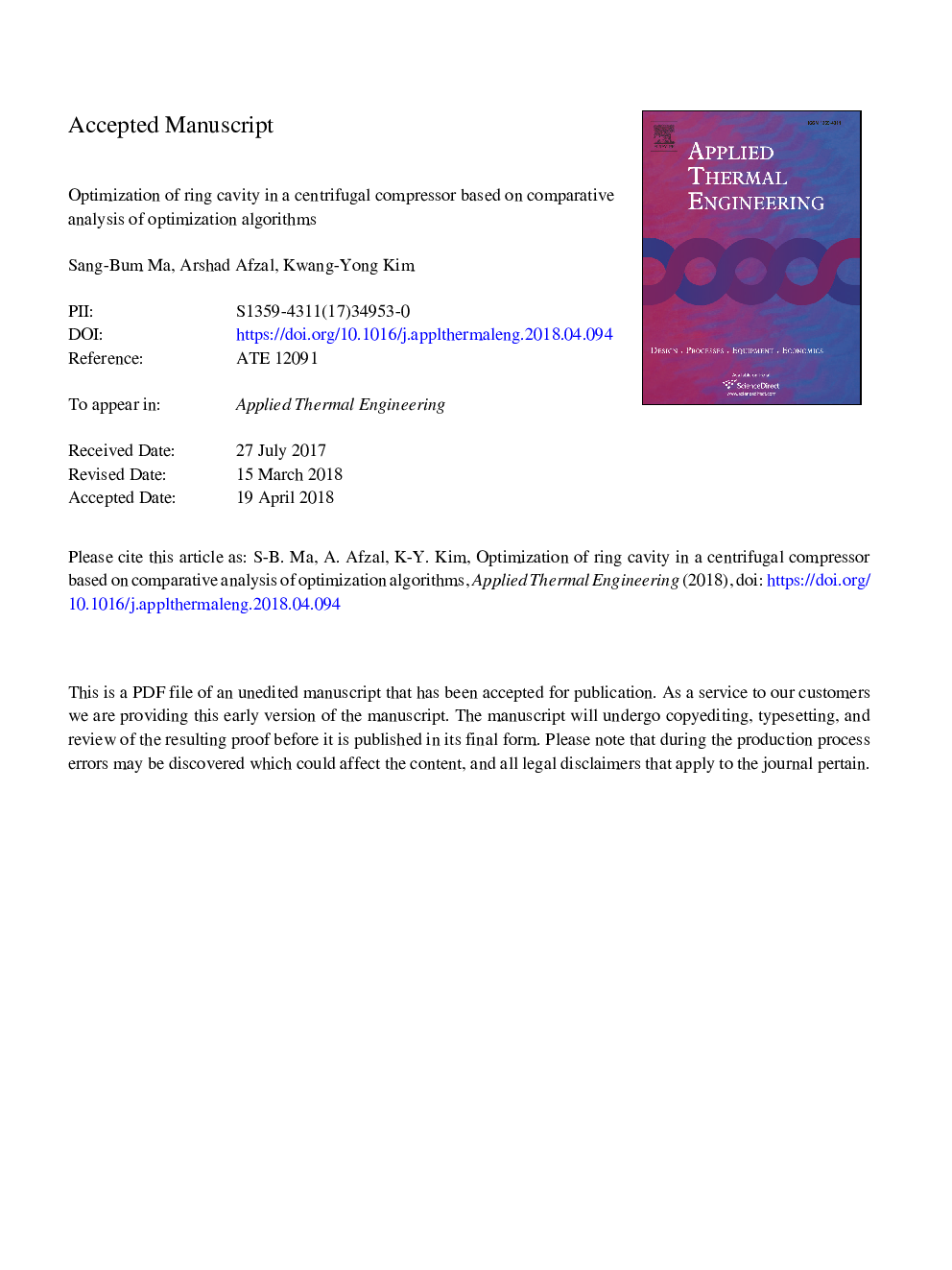| Article ID | Journal | Published Year | Pages | File Type |
|---|---|---|---|---|
| 7045313 | Applied Thermal Engineering | 2018 | 60 Pages |
Abstract
A ring cavity shape was optimized to improve operating stability of a centrifugal compressor based on a comparative analysis of optimization algorithms. Aerodynamic analysis was performed using three-dimensional Reynolds-averaged Navier-Stokes equations with a shear stress transport turbulence model. The stall margin of the centrifugal compressor was used as the objective function, and three geometric parameters associated with the shape of the ring cavity (the width and angle of the inlet cavity port, and the axial length of the cavity) were selected as design variables. Prior to optimization, a comparative evaluation of various global optimization algorithms was performed for three practical design applications in the field of thermo-fluids engineering. Four different algorithms were tested: a genetic algorithm, particle swarm optimization, simulated annealing, and sequential quadratic programming. Performances of the selected algorithms were evaluated comparatively in terms of computational effort and optimization results. For all the problems considered in the present study, Latin hypercube sampling was used to select design points in the design space for surrogate construction and, the objective functions were approximated by the surrogate models based on radial basis neural networks. The results showed that among the tested algorithms, particle swarm optimization was found to be the most effective for obtaining the global optimal solution, and the stall margin of the centrifugal compressor with ring cavity was improved by 1.87% compared to the reference design by the optimization using particle swarm optimization algorithm.
Keywords
Related Topics
Physical Sciences and Engineering
Chemical Engineering
Fluid Flow and Transfer Processes
Authors
Sang-Bum Ma, Arshad Afzal, Kwang-Yong Kim,
